Among the cutting-edge rehabilitation devices presented at REHACARE 2023 in Düsseldorf, Germany last week were a number of innovative robotic systems. The trade fair, which focuses on rehabilitation, prevention, inclusion and care, showcased exoskeletons and robotic walkers and limbs, alongside other physiotherapy solutions.
Kathleen O’Donnell, Vice President of Marketing and New Business Development at USA-based ReWalk Robotics, said:
“REHACARE has always been a very broad spectrum trade show but there were certainly a lot of robotic technologies here this year. Many of these were for rehabilitation and others were for after rehabilitation, as robotics can also be used to help some people with disabilities achieve what they want to in their daily lives.”
Exoskeletons and Exosuits
ReWalk Robotics designs and develops powered solutions to provide gait training and mobility for individuals with lower limb disabilities.
Its ReWalk Personal wearable robotic exoskeleton provides powered hip and knee motion to enable individuals with spinal cord injury to stand upright, walk, turn, and climb and descend stairs.
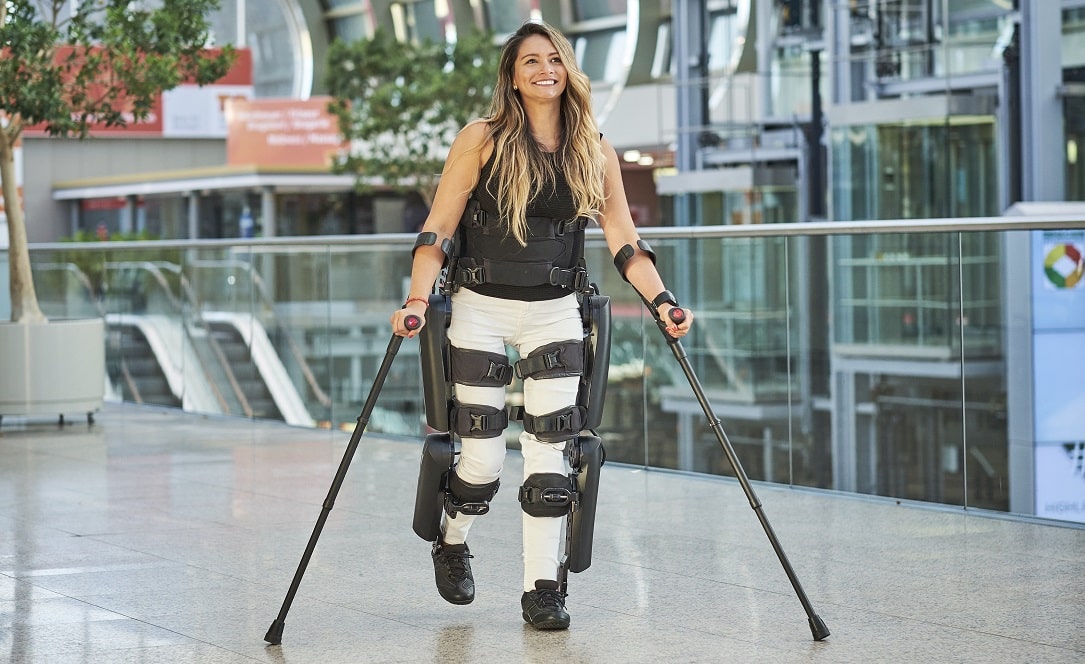

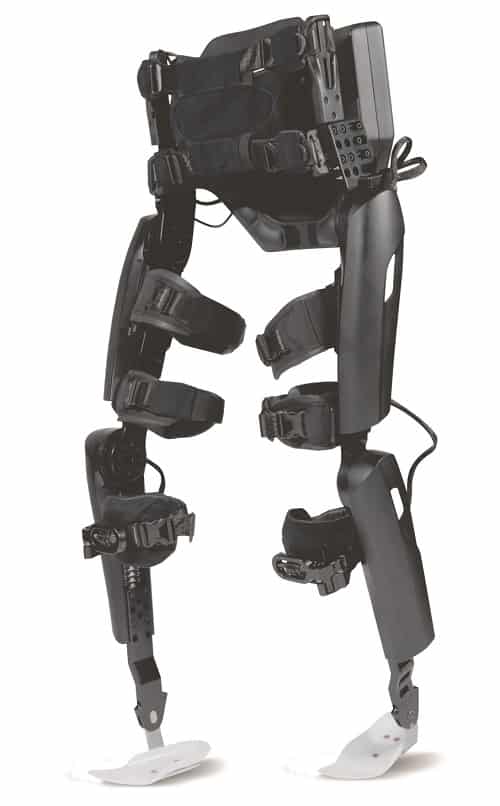
Its ReStore solution is a powered, lightweight soft exosuit intended for use in stroke rehabilitation of persons with lower limb disability.
She explained:
“ReWalk can be used in the clinic during rehabilitation but its primary function is for everyday and real-world environments. It enables people to go for a walk, see eye-to-eye with someone else or stand up and reach objects.
Although both are robotic, the ReWalk is a rigid device that fully supports the user, while the ReStore is a soft exosuit that is mainly fabric based.”
She continued:
“ReStore has cables that run down to an insole in the patient’s shoe and sensors on the patient’s feet to coordinate assistance in time with their natural gait pattern.
During training, the therapist can adjust the assistance and timing and the suit automatically keeps track of the patient. As the patient starts to improve or walk faster, it adjusts the timing automatically so the assistance keeps up with the patient.”
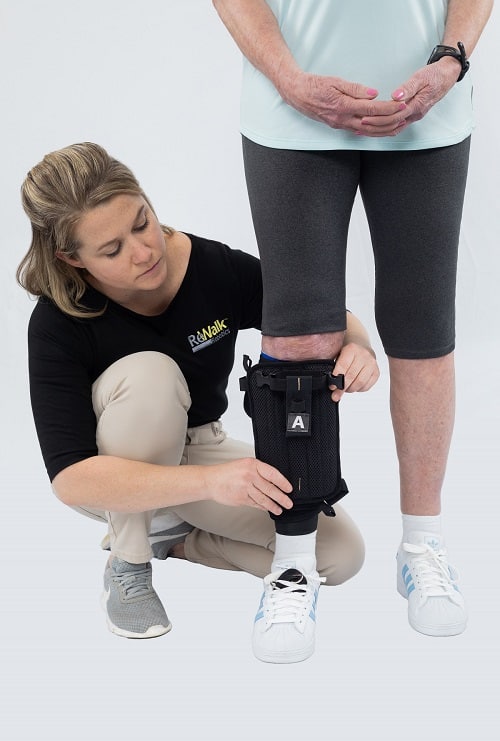
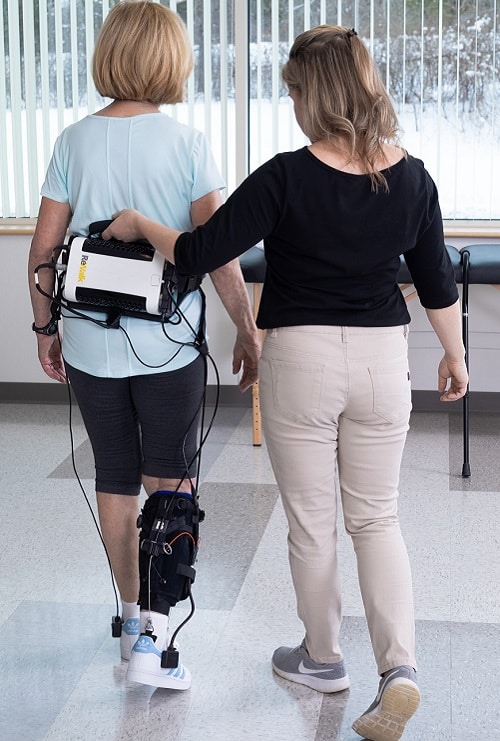
Ms. O’Donnell believes robotics are increasingly being used in rehabilitation because they allow clinicians to deliver more precise levels of assistance more often and with less strain. She said:
“In many cases, where it may take two clinicians to support a user or it may take more time, we can get people training earlier and faster—and with less manpower—with robotics.”
Human Capabilities
Dr. David Gouaillier, Founder and CEO of France-based ORTHOPUS, presented his robotic assistive device for arm mobility at REHACARE. He explained:
“My aim was to develop a product that mimicked the human capabilities of the upper arm for those with motor disabilities, neuromuscular diseases and musculoskeletal disorders.”
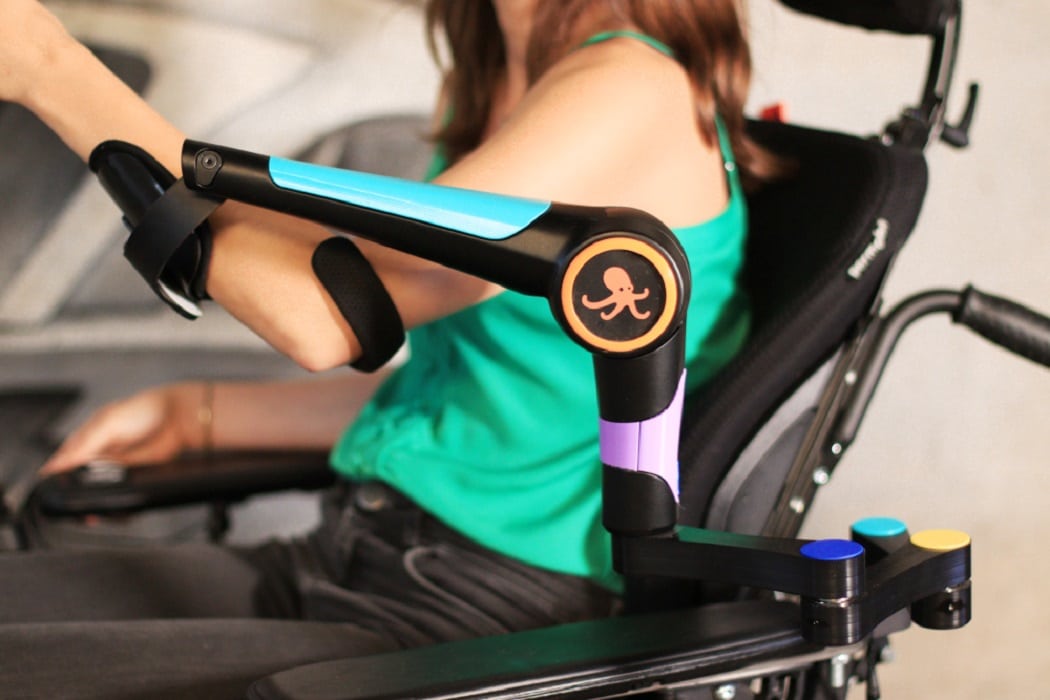
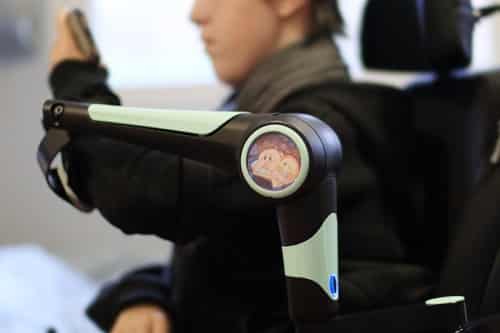
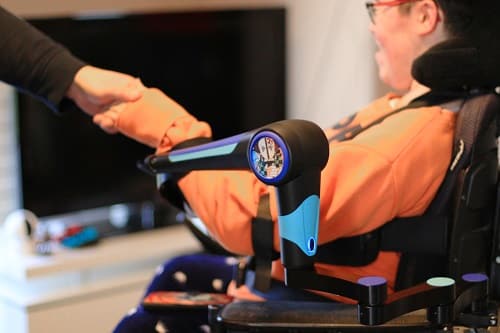
His ORTHOPUS Supporter lightens the weight of the arm of a wheelchair user and offers robotic assistance to enable them to interact more easily with the environment around them.
A second robotic device, the ORTHOPUS Partner, designed to assist in a wider range of arm movements, is currently in development. Dr. Gouaillier said:
“Robotic evolutions are helping people with disabilities to live more autonomously, as well as with training and rehabilitation.
But there are challenges: funding is one problem because we are dealing with hardware companies and we require prototypes; the other is that we are operating within a very small market.
If the goal here is to really help those with disabilities—and the technology is ready—then we just have to convince people that this is a good path to follow.”
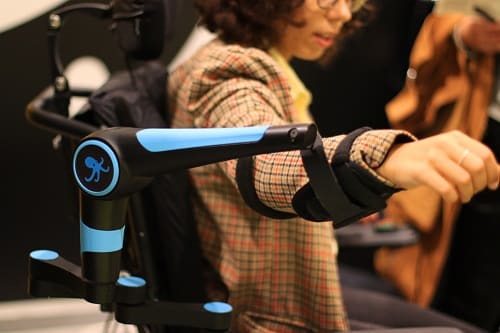
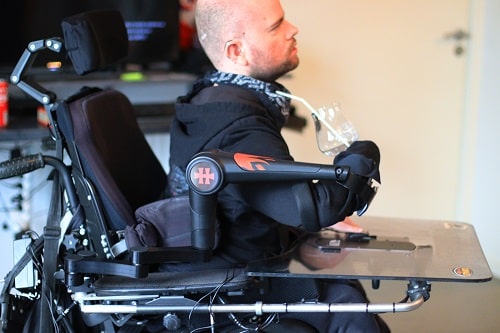

Smart Walking
US-based Camino has brought robotics to the mobility walker, explained the company’s Chief Business Officer, Jeff Jones. He said:
“Camino is stylish, Smart and simple—stylish on the outside, Smart on the inside and simple to use. It is a Smart walker that combines artificial intelligence (AI) and robotics.”
The company was founded Duncan Orrell-Jones, whose father had Parkinson’s for 25 years, after he became frustrated by the poor quality of medical mobility equipment. Mr. Jones explained:
“Camino picks up design elements from high-end carbon fiber racing bikes. It folds up to near cabin baggage size; has a narrow mode to enable access to narrow gaps and features lights that come on automatically.
It is Smart in that has power in its rear wheels that track how fast you are walking and what terrain you are walking on.
It then adjusts 100 times per second: so if you are going uphill it gives a gentle boost and if you are going downhill it puts on a gentle brake.
It has two rear-facing cameras that look at the lower half of the body and use AI to convert the images into a dataset of how that person is walking.”
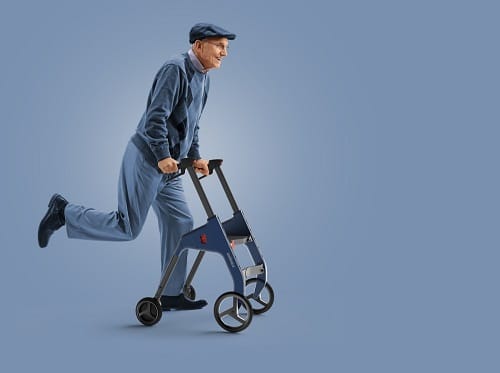
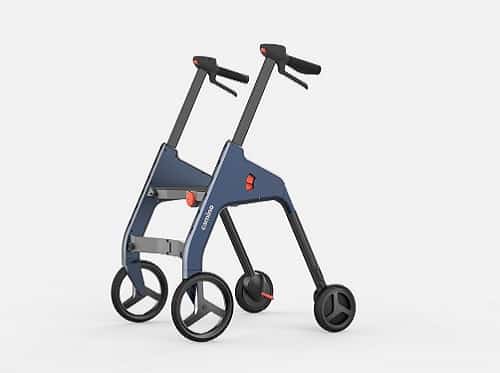
Patients might normally go to a gait lab once a year for testing, he suggested, but with Camino problems are detected as the equipment is used, enabling earlier intervention. Mr. Jones added:
“This not only reduces the risk of falls but also enables people to walk faster and further—and the more they walk, the better the health outcome.
We have to be advocates for the use of technologies, such as robotics, and the benefits they can bring in this field. But we have to make the equipment simple to use and accessible for those groups of people who may have some difficulties with dealing with technology.
That was the aim with Camino.”











